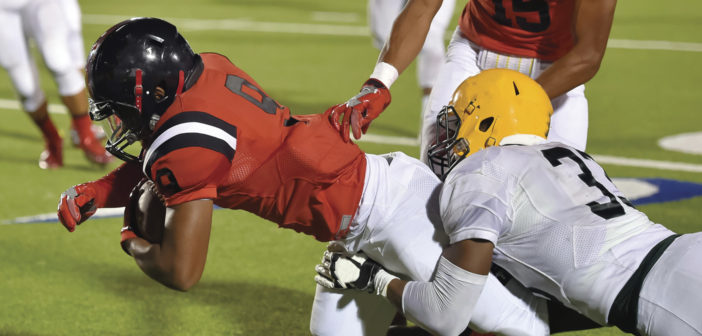With the kick-off of school sports in August, Hurley Pediatric Orthopedic and Sports Medicine specialist Stacy Frye, MD, notices an increase in injuries that often result from student athletes jumping into “practice mode” without prior conditioning. These “overuse injuries,” which can be caused by incorrect technique, poor conditioning or ill-fitting equipment, are examples of the many conditions Dr. Frye treats at her Grand Blanc Township practice. Take a child who has never jogged before, who suddenly goes out for Cross Country wearing shoes that don’t fit properly, and you have a candidate for shin splints or overuse injury of the hips, knees, feet and/or ankles.
As a lifelong athlete and competitive sports participant, Dr. Frye gets it – that drive kids have to push harder in order to succeed and stand out from the crowd. But, along with relating to the demands of year-round competition and extensive travel team participation, she offers her young patients guidance on achieving the balance necessary to cut down on common injuries.
“The off-season has essentially become obsolete,” Dr. Frye says. “Many children – from all socioeconomic backgrounds – are playing sports year-round, playing on multiple teams at the same time, and doing additional training.” Whether the pressure to do so is coming from the athletes themselves or from parents, coaches or teammates, the best way to avoid the injuries this non-stop mentality can lead to is by conditioning, strengthening and stretching.
“Student-athletes should ease into their season by preparing ahead of time,” Dr. Frye advises, adding that they should devote at least one week (ideally more) to light, aerobic exercise that builds to more intense activity. They can also prioritize core strength. “Having strong core/trunk muscles is crucial for injury prevention and also aids in improved sports performance, enhancing speed, strength and balance.” Added bonus: athletes can work on core muscles by doing exercises such as planks while waiting for dinner to be ready, or first thing in the morning while still in pajamas.
Stretching can also decrease the risk for injury and pain, by loosening up those tight muscles to which growing kids are prone. The final measure to combat injury is rest – that all-important, often undervalued method by which the body recovers exercised muscles, and stressed bones rebuild.
Parents and coaches can do their part to support athletes by making sure the lines of communication are open, so that kids are comfortable revealing when they’re in pain or struggling. By teaching athletes proper technique and/or modifying activity to allow them to still play comfortably, coaches can minimize injury and keep their players in the game safely.
“I believe in taking a team-based approach to keeping kids healthy,” Dr. Frye says. “By working together – parent, coach and doctor – we can keep kids at their best, whether it be in sports, music, dance or other activities they enjoy.” Her words reinforce what the best athletes already know: teamwork is at the core of every successful season!
Parents and coaches can do their part to support athletes by making sure the lines of communication are open, so that kids are comfortable revealing when they’re in pain or struggling.
Stacy Frye, MD, specializes in the evaluation and treatment of outpatient orthopedic and sports medicine conditions. For more info, visit stacyfryemd.com or follow her on social media, Twitter @stacyfryemd.








